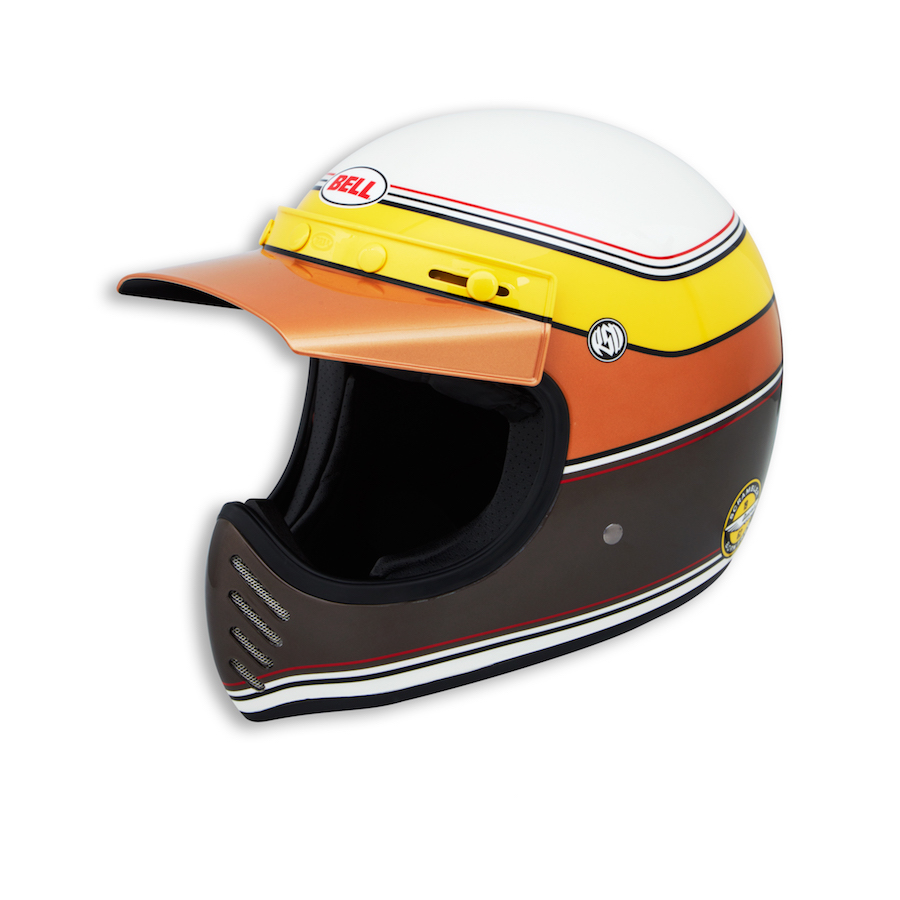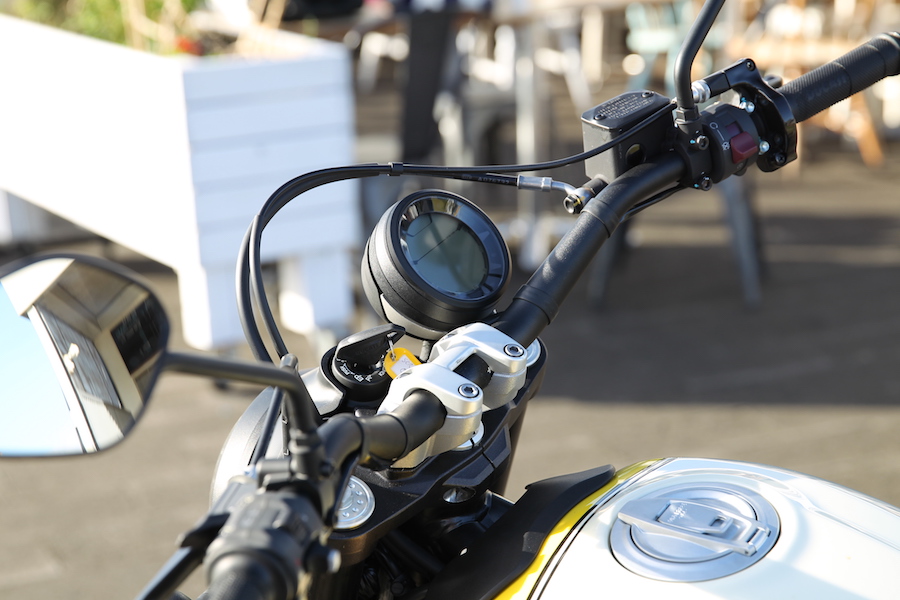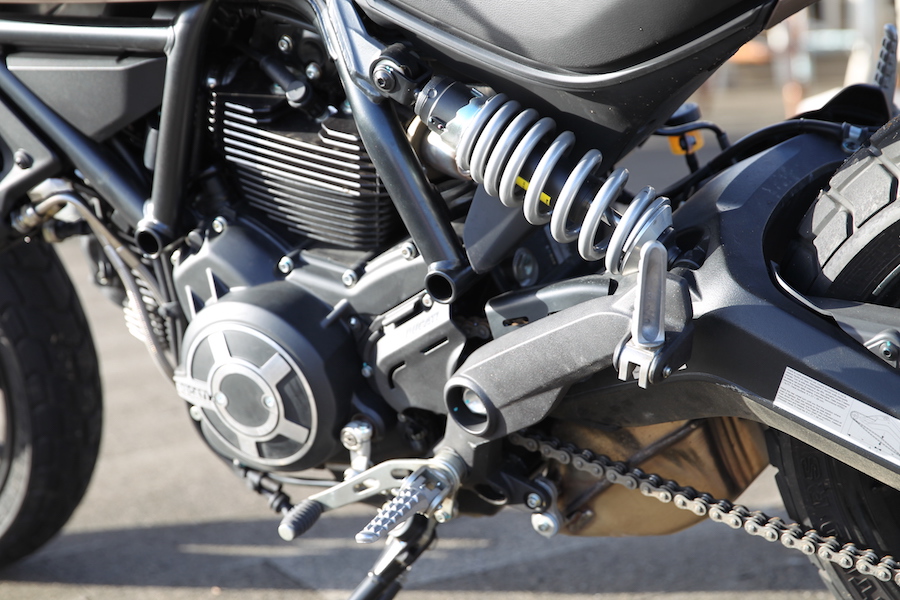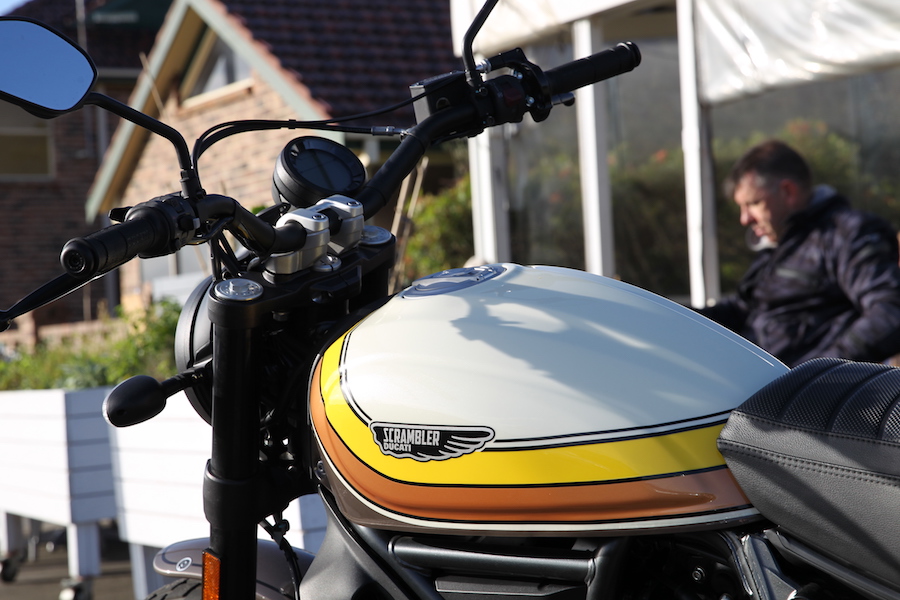The born-again Scrambler is celebrating its third birthday, and to celebrate Ducati has given its popular model some swanky new clothes
I have a bit of a connection with Ducati’s Scrambler. Back when I was working on the AMCN news desk, I followed the model’s progress from the very first rumours and name registrations in late 2012 through to its world launch in January 2015. It was a lengthy gestation period that even formed the basis for an AMCN April Fool’s Day joke.
Once revealed, though, it was clear the Scrambler was no laughing matter. Ducati had not only created what was then a four-bike platform based loosely on the design of its 1960s single-cylinder machine of the same name, but had also launched a brand that promised a lifestyle of endless Californian summers and freedom in a place we often dream about, the so-called Land of Joy.
Three years later, the Land of Joy dream is still as vivid as ever. The Scrambler badge has grown to a fully fledged brand, with a range of clothing and accessories to match, and there’s even a Land of Joy radio station.
The range now consists of nine models (see breakout) if you count the soon-to-arrive Scrambler 1100. Presently, the newest Australia arrival to the family is the Roland Sands-inspired Scrambler Mach 2.0.
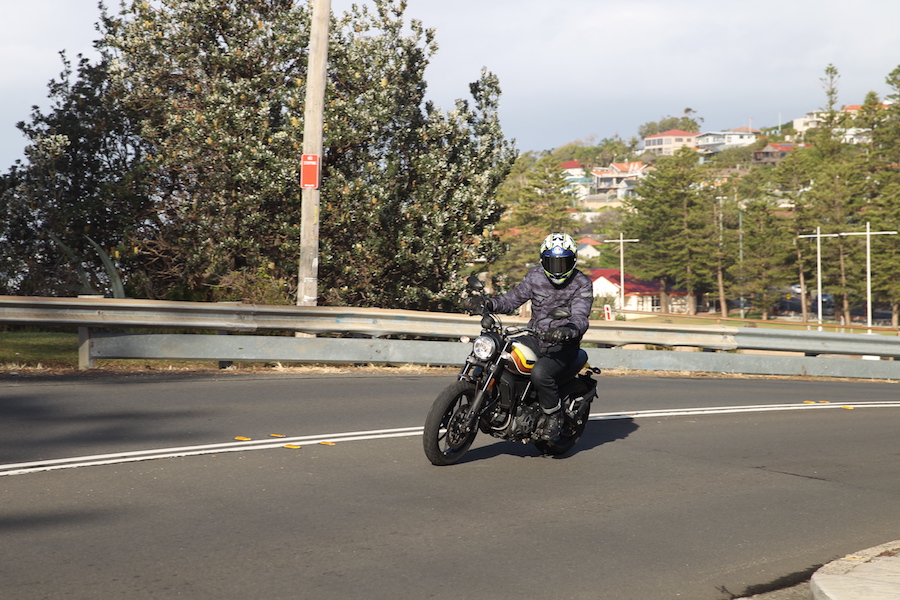
The saying ‘If it ain’t broke, don’t fix it’ is relevant here. Three years after the launch of the Icon model, the newest Mach 2.0 has barely strayed from the original blueprint.
A lower and flatter handlebar (Ducati calls it a low variable cross-section aluminium handlebar), a Flat Track Pro seat, some blacked-out engine bits and a Roland Sands Design paint scheme, inspired by the Bell Cross Idol helmet, are the only changes. And the extras will set you back $2400 over the base model
At this point you may be wondering if the Scrambler Mach 2.0 is little more than a marketing strategy to tap into the popularity of the California-cool former racer who has carved a famous business from the custom and design industry, while simultaneously appearing to spend his days riding bikes and surfing – shit, who wouldn’t do that? It is a marketing marriage made in heaven; Sands is laid-back, calm and right at home cruising the surf strips of Southern California, and the idea behind the Scrambler is the same.
The triple-tone RSD paint scheme is what sets the bike apart from the rest of the Scrambler family, and I’m not the only one who thinks it’s brilliant in its simple execution.
During my time with the Mach 2.0, it attracted the sort of attention usually reserved for big American V-twins, but this time it wasn’t the name on the tank that drew interested onlookers but the colours. “That looks cool, what is it?” and “I love that paint job” were the two comments most often heard whenever I parked the bike up at a café or the beach carpark.
It’s this cool design and riding simplicity that made me grab the opportunity to ride the Mach 2.0. The chassis and engine may be unchanged from the original Icon, but I thought it was high time we revisited the bike purely for, well, the (riding) joy.
The Scrambler’s nuts and bolts have been discussed numerous times in these pages over the past three years, so there’s no need to retrace old ground. Riding one is more about how it makes you feel than what the pistons, cams and cogs are doing.
All bikes make me feel free. Once my visor is down, phone calls, emails and text messages are unable to reach me and it’s the only place I don’t feel guilty ignoring them.
The Scrambler also delivers a feeling of simplicity, and there are two features I like: the single, round digital/analogue instrument clock, and the good old-fashioned throttle cable that exits from the top of the twist grip just like my old motocross bikes. They are simple, small things that set the tone for a good old-fashioned ride with no electronic bells and whistles, other than the safety of ABS.
I’m a big guy. This bike is not designed for a rider of my dimensions, and my size didn’t go unnoticed by many onlookers. But looks can be deceiving, and – just as I did with the original Icon, as well as the Sixty2 LAMS version – I found the Scrambler super comfortable, regardless of how I may have looked. Tall riders need not shy away from the Icon just because of its smaller appearance.
The stepped Flat Tracker seat on the Mach 2.0 appears lower than the Icon, but both sit at 790mm. The illusion is created by the step up to a slightly higher pillion perch on the Mach 2.0. As well as looking more stylish, it offers a little more back support, and for those with a limited inseam, it provides a fulcrum when moving the bike around in tight spaces.
Despite not having sat on a Scrambler for at least 18 months, the flatter handlebar was instantly noticeable. It’s hard to believe the original Icon and the Mach 2.0 have the same 845mm overall width (mirror to mirror) because the bar on the Mach 2.0 feels much wider and makes steering the bike a breeze.
It took a day or so before I became completely comfortable with lane filtering at anything more than crawling pace, not that that’s an issue; the low-speed stability of the Scrambler is legendary.
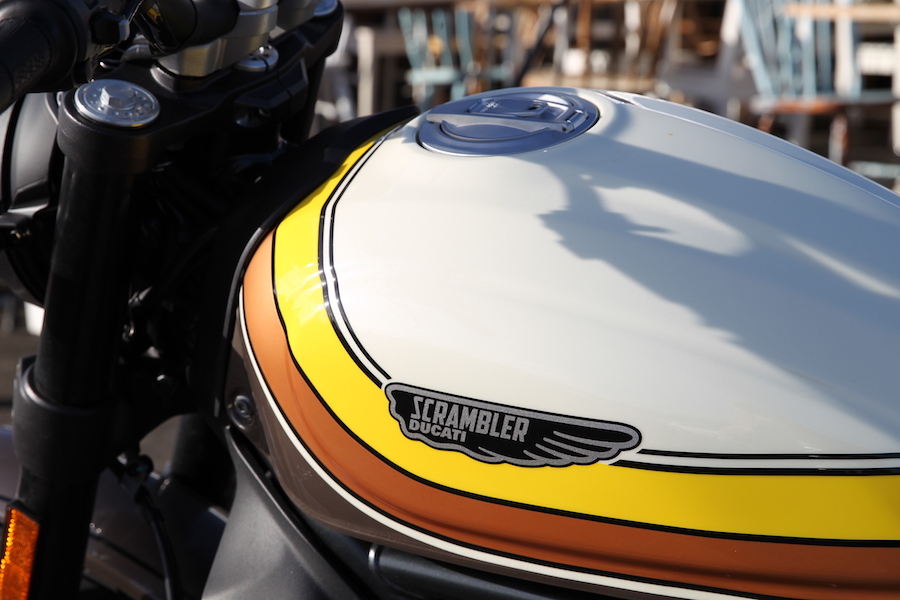
Also retained is the familiar gearbox clunk. The selector on the test bike felt a bit stiff, and finding neutral at the traffic lights proved troublesome.
The clutch was also super grabby when cold, leading to a couple of very embarrassing stalls and bunny-hop departures from my driveway and the lights at the end of my street. I don’t remember this being an issue with previous Scramblers. Once the engine was warm, the clutch settled down.
Through the Royal National Park south of Sydney, or negotiating the urban jungle of the city CBD, the mid-range power of the V-twin was a delight. The 68Nm of torque peaks at just 5750rpm, which is perfect for the bike’s design brief as an urban commuter/café cruiser, and maximum power of a modest 55kW means it’s not going to bite you. The only area where I found the Mach 2.0 struggled a little was when I asked it to accelerate quickly while travelling at freeway speeds.
Adding a little extra scrambler-like styling to the Mach 2.0 are chunky Pirelli MT 60 RS tyres. These are the same dual-purpose hoops fitted to the Icon, and I was impressed by their on-road ride and grip.
The secret to the Pirellis is a chunky knobby-style tread pattern that progressively transitions from an off-road-style block in the centre to a smaller-block tread pattern on the shoulders. The design allows the cornering ability of the tyre to perform at a higher level than you initially give it credit for.
This bike is up for the sort of spirited riding the meaty mid-range power of the air-cooled 803cc V-twin engine is happy to deliver.
As you’d expect, the Mach 2.0 is every bit as enjoyable to ride as the Icon. The limited upgrades are not going to entice many current owners to trade-up, but many will probably be looking at the eye-catching colour scheme with envious eyes.
The idea of the new Mach 2.0 is to keep the brand looking fresh, something Ducati has mastered by continually coming up with ideas for special Scrambler models like the Mach 2.0, as well as all-new models like the Desert Sled and Scrambler 1100.
Obtaining the RSD paint may require an additional investment of $2400 over the base Icon, but you will be comforted in the knowledge that you’re not going to get trumped by another Scrambler owner at the local motorcycle hot spots. Well, at least until the Scrambler 1100 arrives.
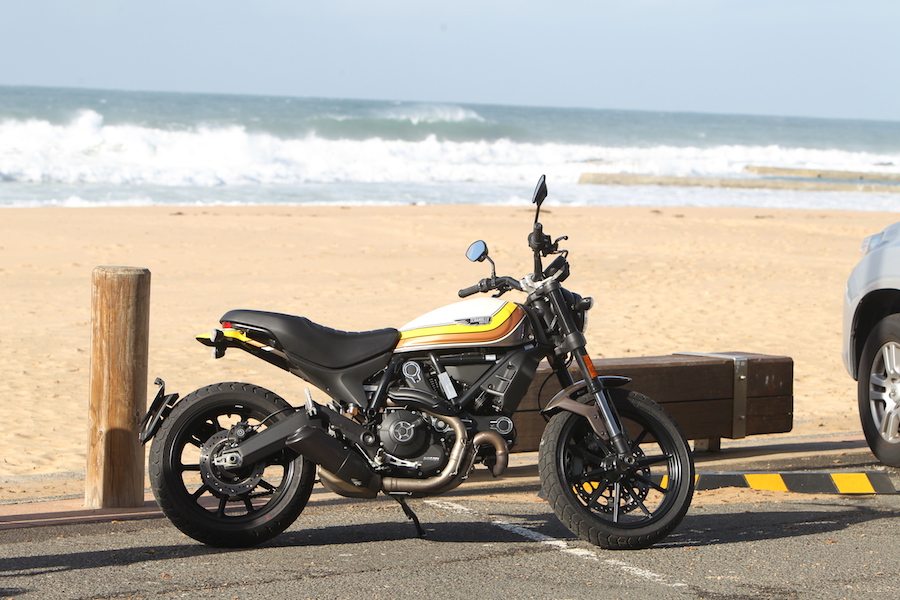
Feelin’ groovy
The paintwork and graphics are the work of Californian designer Roland Sands. According to Ducati, the colours evoke the West Coast style of the ’70s. Helping the paint scheme pop is the blacked-out exhaust and engine. Just looking at it makes you start singing the Beach Boys’ California Girls.
Understated
Other changes that set the Mach 2.0 apart from the Icon model are a low-slung handlebar, Flat Track Pro seat, black exhaust and cylinder head covers, and brushed cooling fins. This list isn’t long, but it’s the little things that can have significant impact.
Old’s cool
The 18-inch front and 17-inch rear wheel combination may seem odd, but they serve a dual purpose. As well as providing a retro look without compromising handling, the staggered sizing also provides a little off-road capability, which is helped by the Pirelli tyres.
Matching lid!
Not many factory paint schemes offer a matching helmet counterpart. If you want to look like a (factory-backed) disciple of Roland Sands, this Bell Cross Idol helmet from the Scrambler clothing and accessories range is a must! The colours and stripes are said to represent America’s West Coast of the 1970s.
